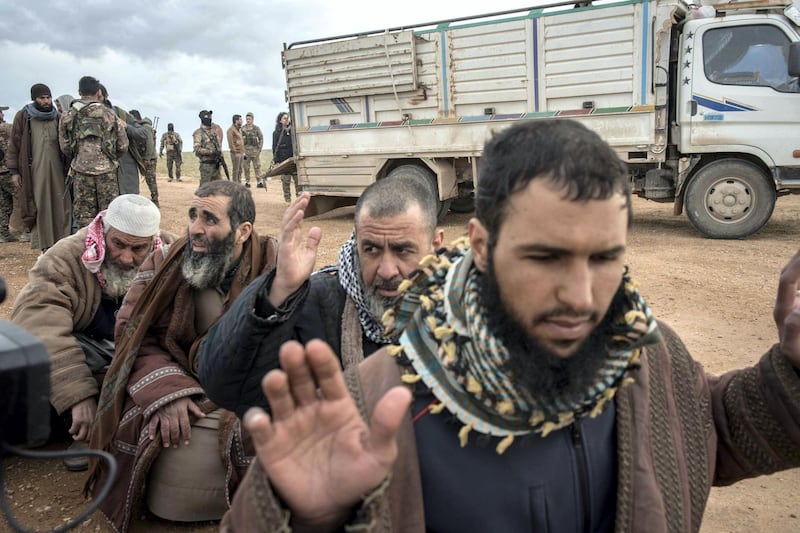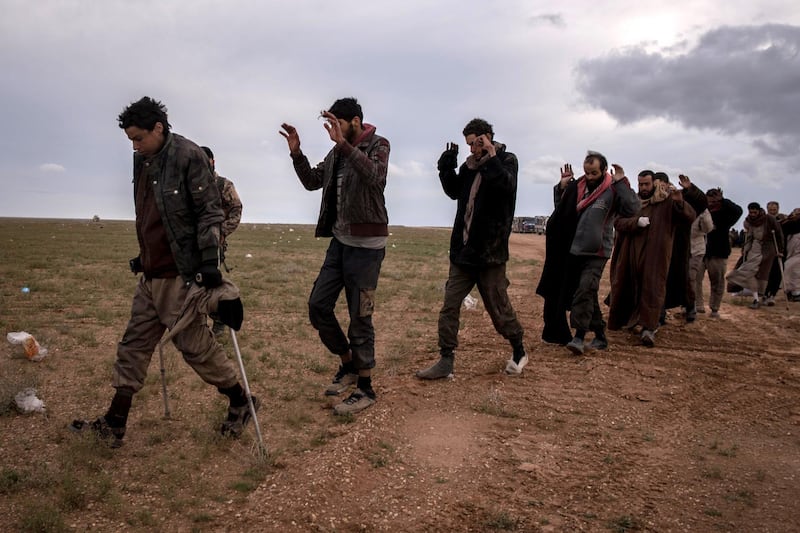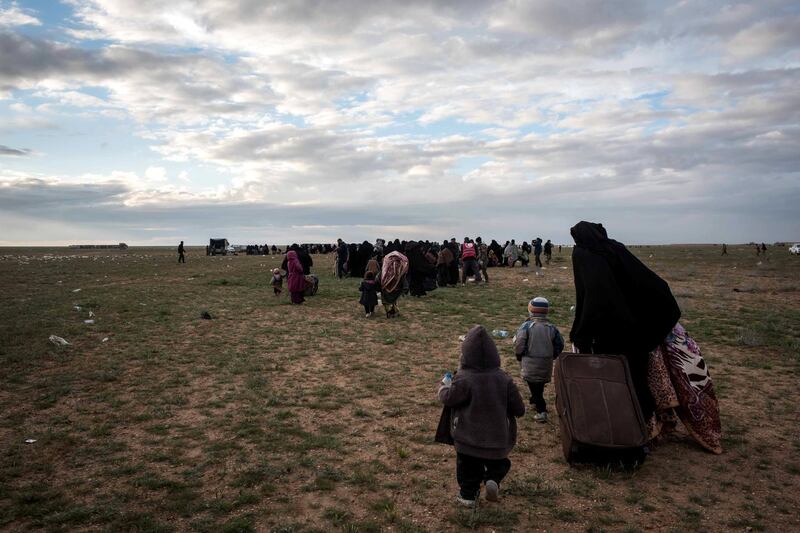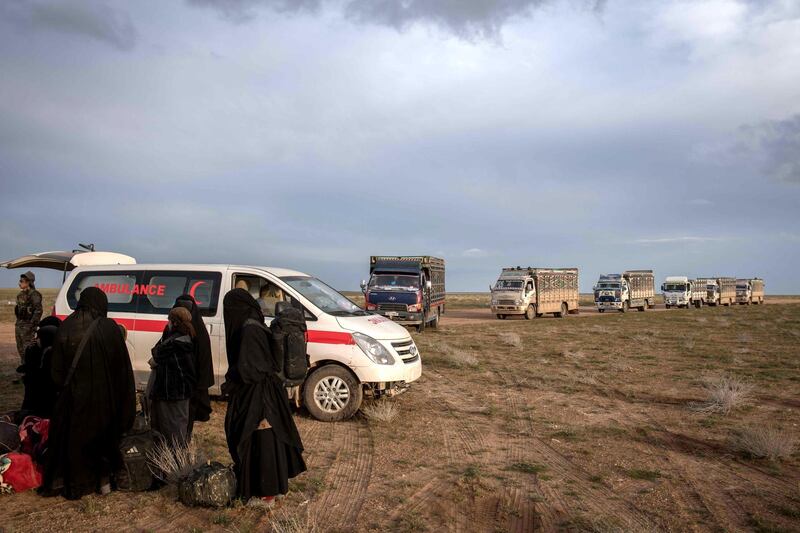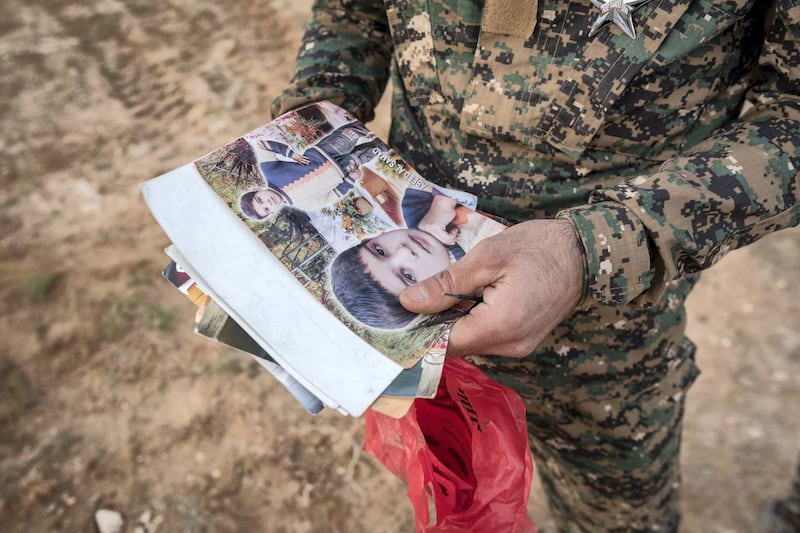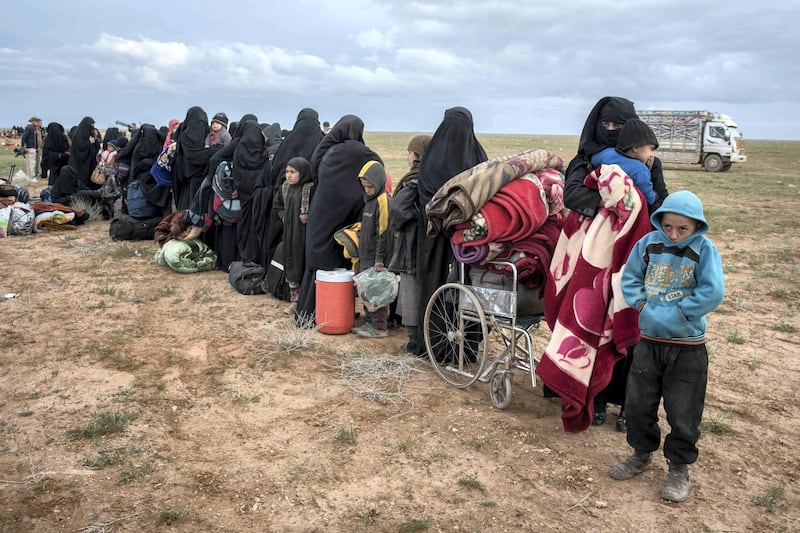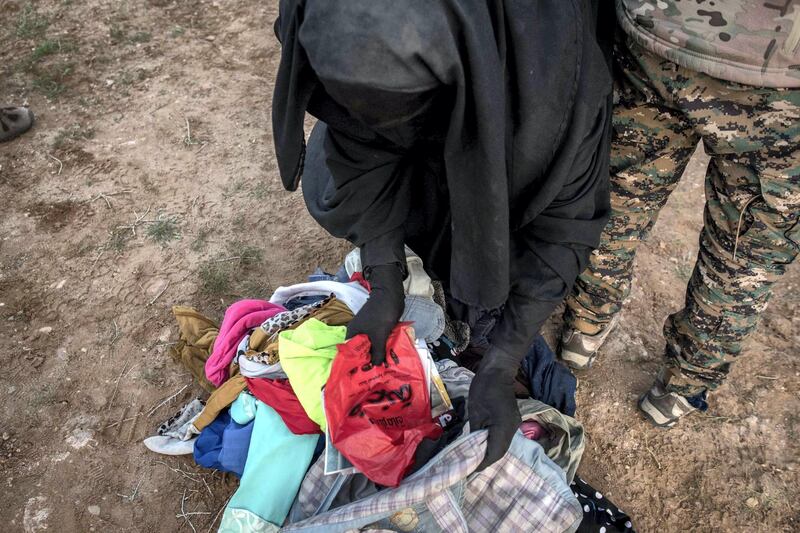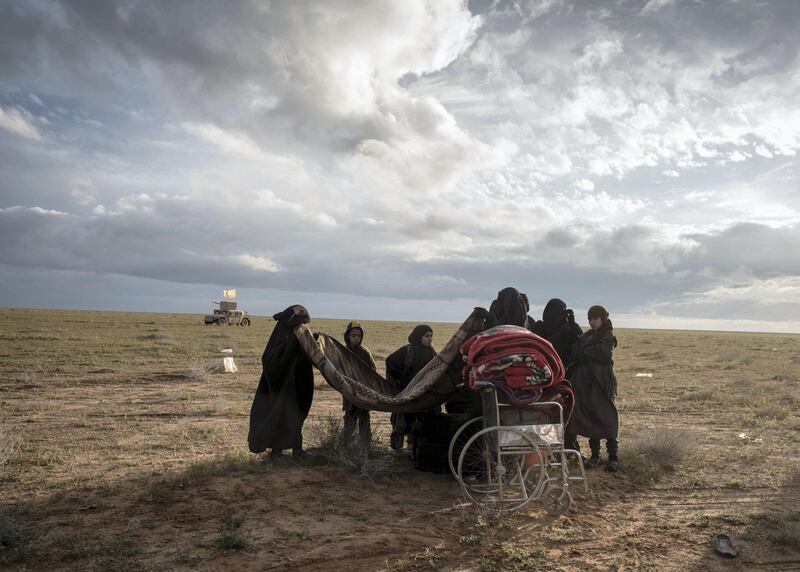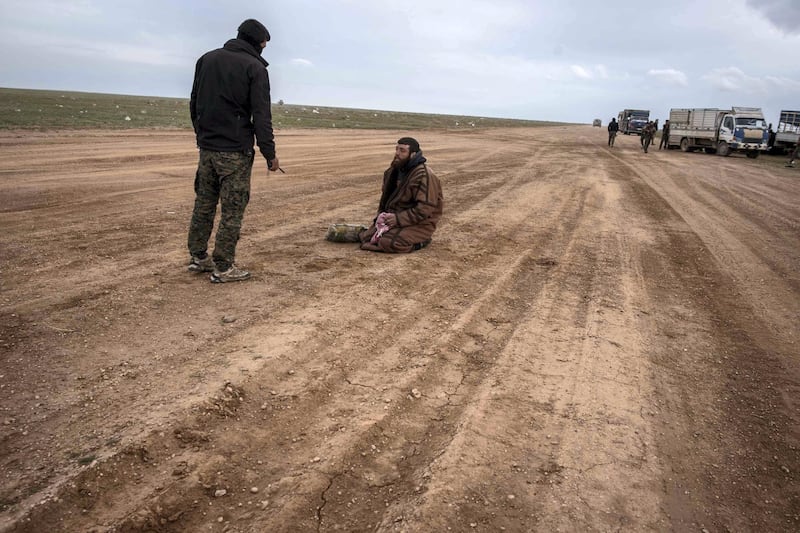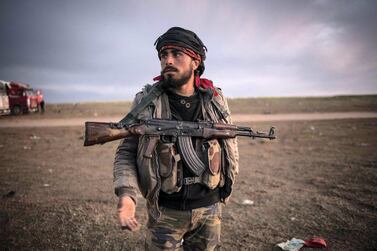The offensive to liberate the last ISIS enclave of Baghouz in eastern Syria began again on Sunday evening, with an exchange of fire between militants and US-backed Syrian forces.
"The military operations have started. Our forces are now clashing with the terrorists and the attack has started," said Mustafa Bali, spokesman for the Syrian Democratic Forces.
The SDF, a coalition of Kurdish and Arab fighters waging war against ISIS, has besieged the 700-metre square pocket and was, until today, in negotiations with the last fighters inside after thousands of civilians and militants left the camp in the last week.
That humanitarian pause over the past week slowed military action against the group’s remaining fighters.
Kurdish official Aras Orkesh said on Saturday that the final push would take about three days.
“It’s the end of the ceasefire with Daesh,” Mr Orkesh said.
ISIS fighters have slowed the offensive by laying mines and booby-traps, and attacking advancing forces with car bombs and sniper fire.
Landmine defusers are sweeping the area at night to allow SDF forces to push forward.
ISIS is also using women and children as human shields.
“What’s holding us up is the civilians. We can see them, women and children inside,” Mr Orkesh told AP.
Fighters have been emerging from tunnels inside Baghouz, making estimates of those remaining difficult.
Militants willing to fight to the death have been seen at the edge of the edge of the patch of farmland, with faces covered, as they supervise the move to safety of wounded fighters, and women and children.
The SDF and ISIS lines are now only about 200 metres apart in Baghouz, with a tense stand-off continuing.
The fall of Baghouz would be the end of ISIS’s territorial hold in Iraq and Syria.
Military officials and experts said it would not represent the end of the group, which has already reverted to guerrilla tactics.
Meanwhile, ISIS claimed an attack in northern Syria, where a suicide car bomb aimed at US forces wounded at least two allied fighters on Saturday.
The convoy hit included a US armoured vehicle from the international anti-ISIS coalition and Kurdish fighters in the city of Manbij, the Syrian Observatory for Human Rights said from Britain.
It said the two wounded fighters were from the SDF.
"No US soldiers were injured or killed today," coalition spokesman Sean Ryan said.
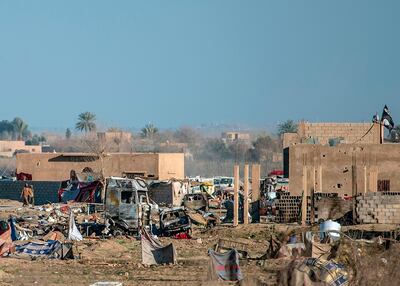
The attack is the third in the past two months on the coalition in northern Syria.
On January 16, four Americans were among 19 people killed in a suicide attack claimed by ISIS in Manbij.
The city is a former ISIS stronghold that is now held by a military council affiliated to the SDF.
It is a major point of contention between Syria's Kurdish minority, which claims autonomy in parts of northern and north-eastern Syria, and neighbouring Turkey.
The militant attacks followed US President Donald Trump's announcement in December that he would withdraw American troops from Syria, as he declared ISIS had been defeated.
The White House later said about 200 American "peacekeeping" soldiers would remain in northern Syria.
